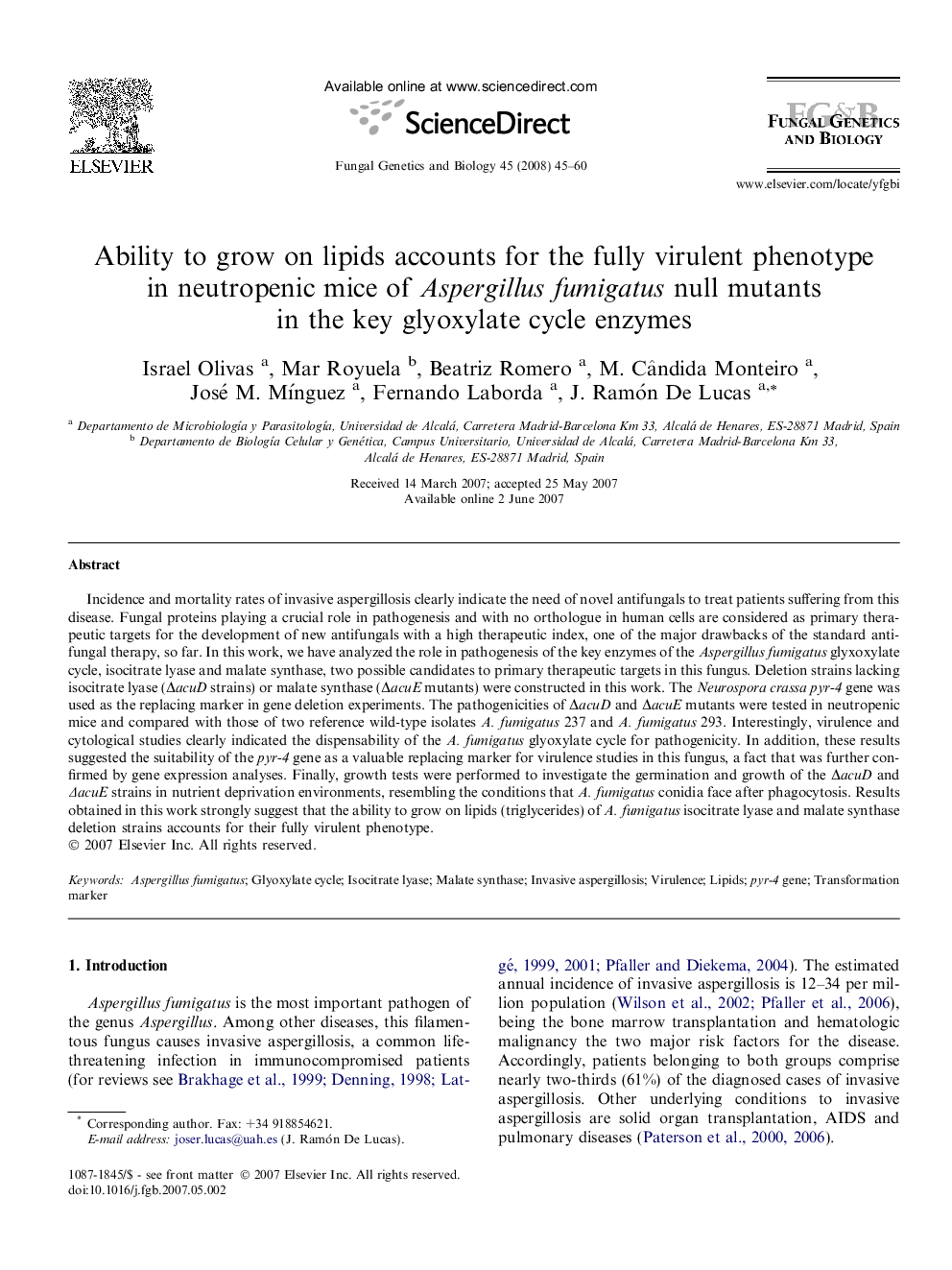| کد مقاله | کد نشریه | سال انتشار | مقاله انگلیسی | نسخه تمام متن |
|---|---|---|---|---|
| 2181459 | 1095297 | 2008 | 16 صفحه PDF | دانلود رایگان |

Incidence and mortality rates of invasive aspergillosis clearly indicate the need of novel antifungals to treat patients suffering from this disease. Fungal proteins playing a crucial role in pathogenesis and with no orthologue in human cells are considered as primary therapeutic targets for the development of new antifungals with a high therapeutic index, one of the major drawbacks of the standard antifungal therapy, so far. In this work, we have analyzed the role in pathogenesis of the key enzymes of the Aspergillus fumigatus glyxoxylate cycle, isocitrate lyase and malate synthase, two possible candidates to primary therapeutic targets in this fungus. Deletion strains lacking isocitrate lyase (ΔacuD strains) or malate synthase (ΔacuE mutants) were constructed in this work. The Neurospora crassa pyr-4 gene was used as the replacing marker in gene deletion experiments. The pathogenicities of ΔacuD and ΔacuE mutants were tested in neutropenic mice and compared with those of two reference wild-type isolates A. fumigatus 237 and A. fumigatus 293. Interestingly, virulence and cytological studies clearly indicated the dispensability of the A. fumigatus glyoxylate cycle for pathogenicity. In addition, these results suggested the suitability of the pyr-4 gene as a valuable replacing marker for virulence studies in this fungus, a fact that was further confirmed by gene expression analyses. Finally, growth tests were performed to investigate the germination and growth of the ΔacuD and ΔacuE strains in nutrient deprivation environments, resembling the conditions that A. fumigatus conidia face after phagocytosis. Results obtained in this work strongly suggest that the ability to grow on lipids (triglycerides) of A. fumigatus isocitrate lyase and malate synthase deletion strains accounts for their fully virulent phenotype.
Journal: Fungal Genetics and Biology - Volume 45, Issue 1, January 2008, Pages 45–60